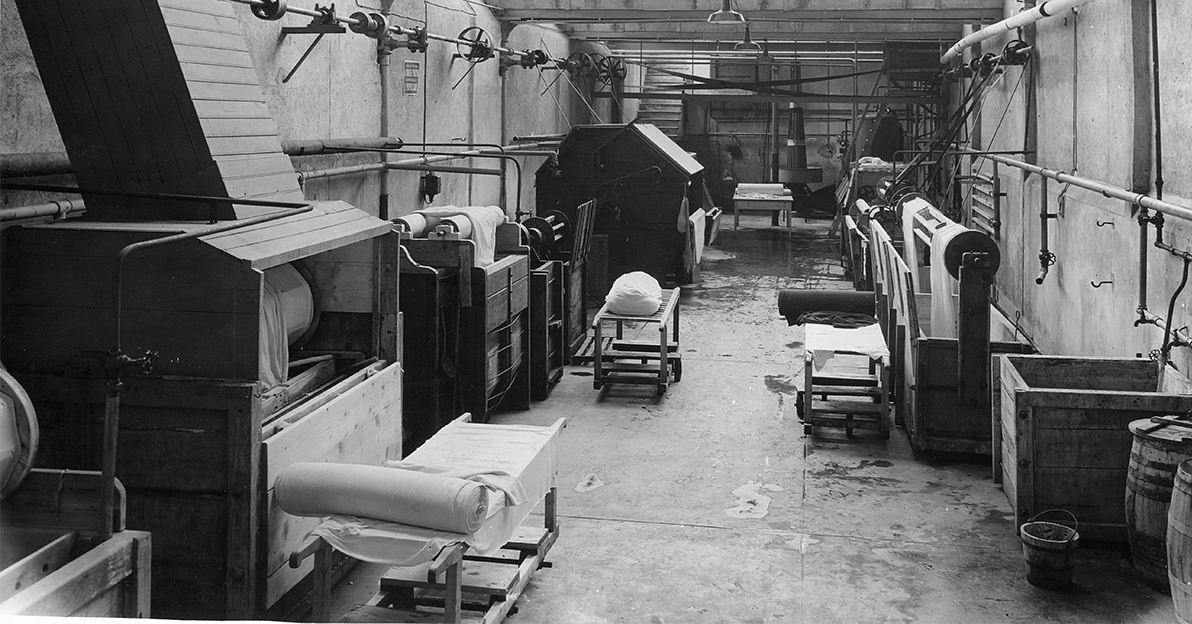LABELS: WOOL WASHING
When we decided to launch a new blog, an event devoted to the textile universe and its dynamics in March 2021, it was obvious to us to debut writing about wool. A necessary homage to the origins of FILA, but also to the Biellese lands, whose wool production is internationally famous and centennial.
With the first ‘label’ of the year, we’re back speaking about it, with an even more accurate attention for the complex production of a fiber which was born more than one thousand years ago. This month is devoted to the washing process of wool, a very important one after the shearing (the removal of raw fleece from the sheep’s bovy) and the cleaning (the removal of all the remaining impurities). In the Biellese lands, furthermore, the features of water in the surrounding rivers make it even crucial.
In factories, after being sheared and shaped in bales, fleece is classified according to the different types of fibers. After this, it’s ready for several washings with warm water, where detergents guarantee a primary degreasing inside big tubes. After the elimination of all the impurities, raw fleece is dried with hot air, and from waste water some pure grease known as lanolin is extracted. Already known in Ancient Greece (and in Pliny the Elder’s Naturalis Historia), where it was used to make fabrics waterproof, today such oily matter is an emulsifier substance which is widely used in the pharmaceutical realm.
At the end of this washing process, dry wool is still a little raw, with knots and dirty leftovers. Such imperfections, anyway, are wiped out with the following phase, carding, thanks to which fibers become as soft as clouds. See you next month to discover all the secrets of it!
Leave a Reply


